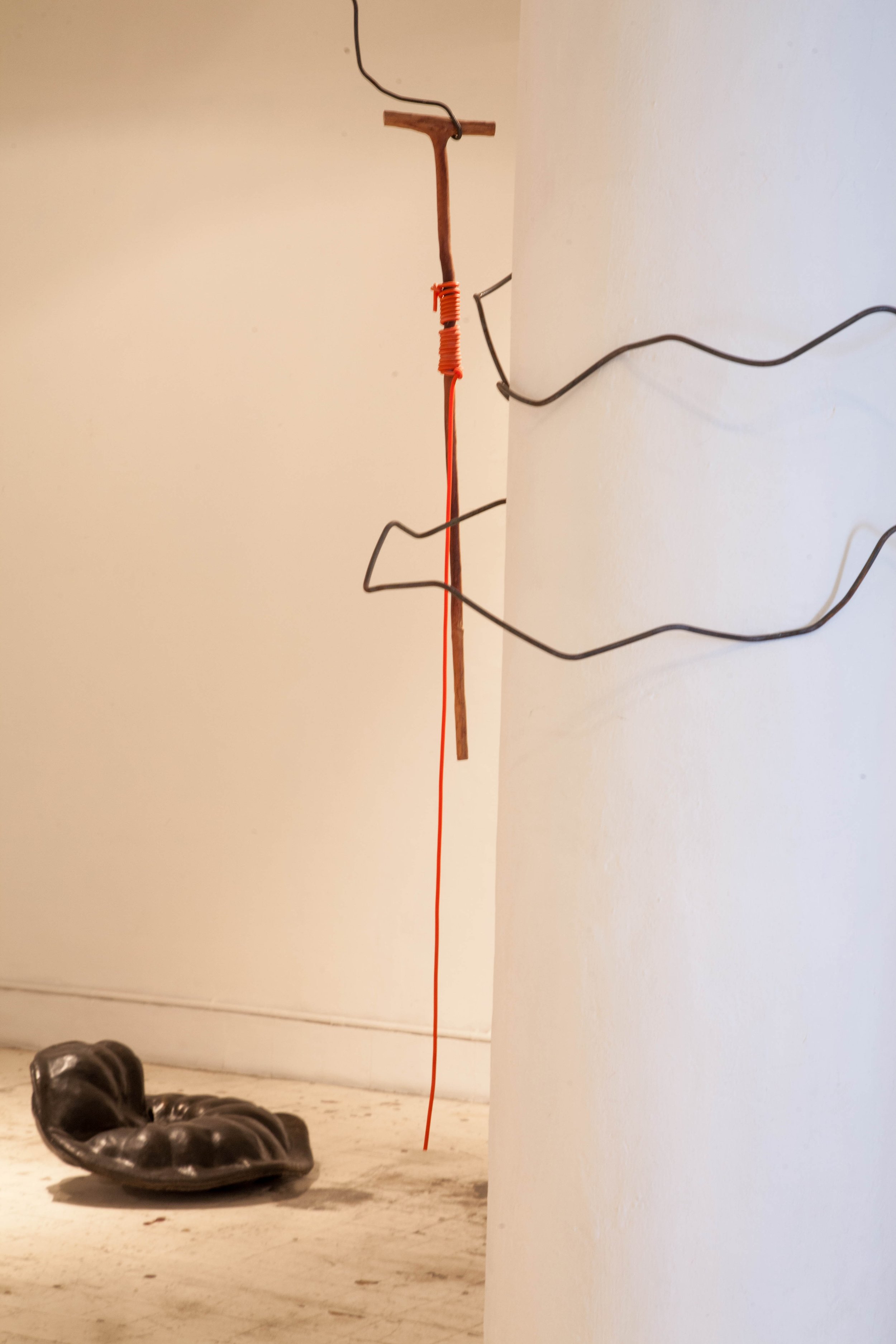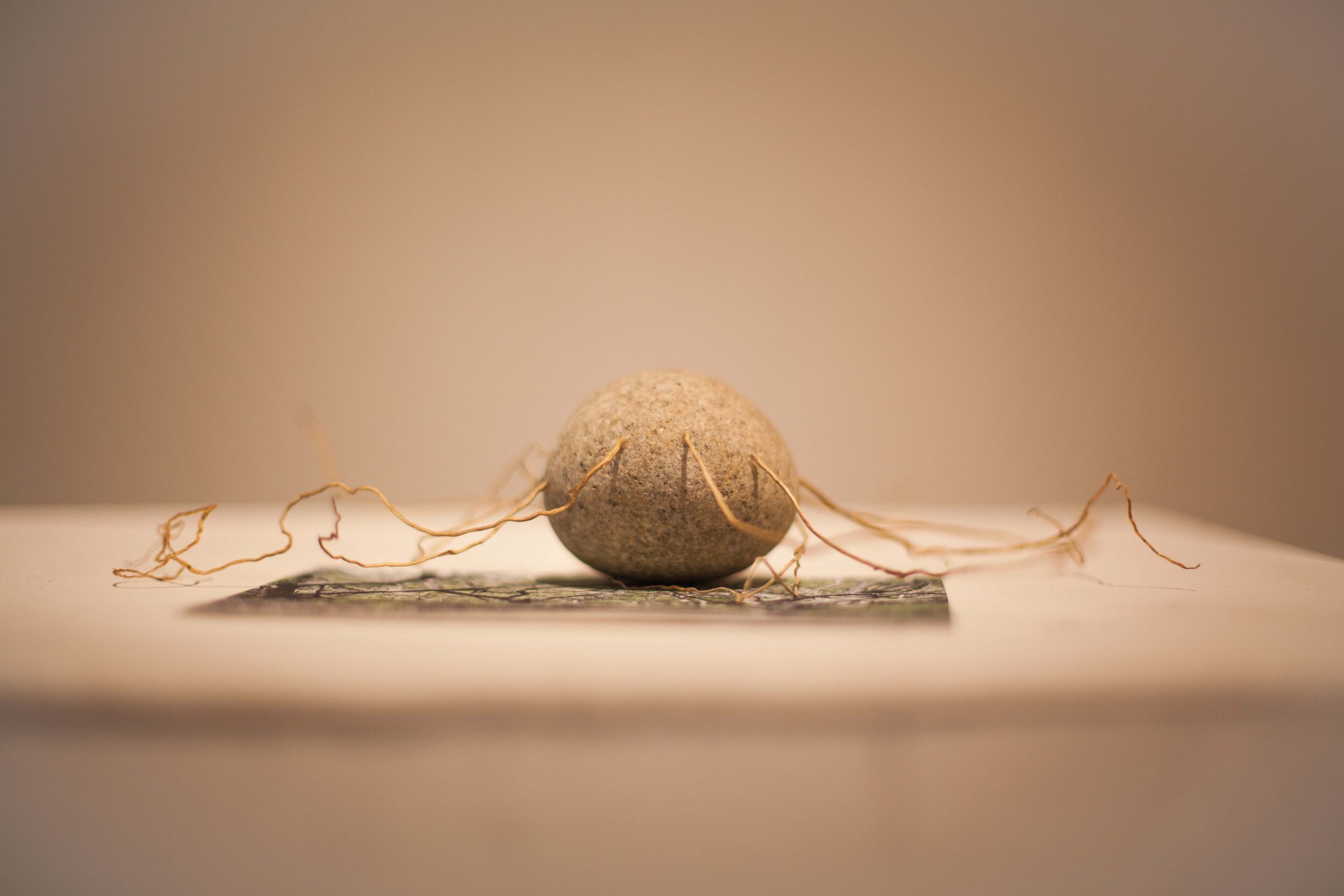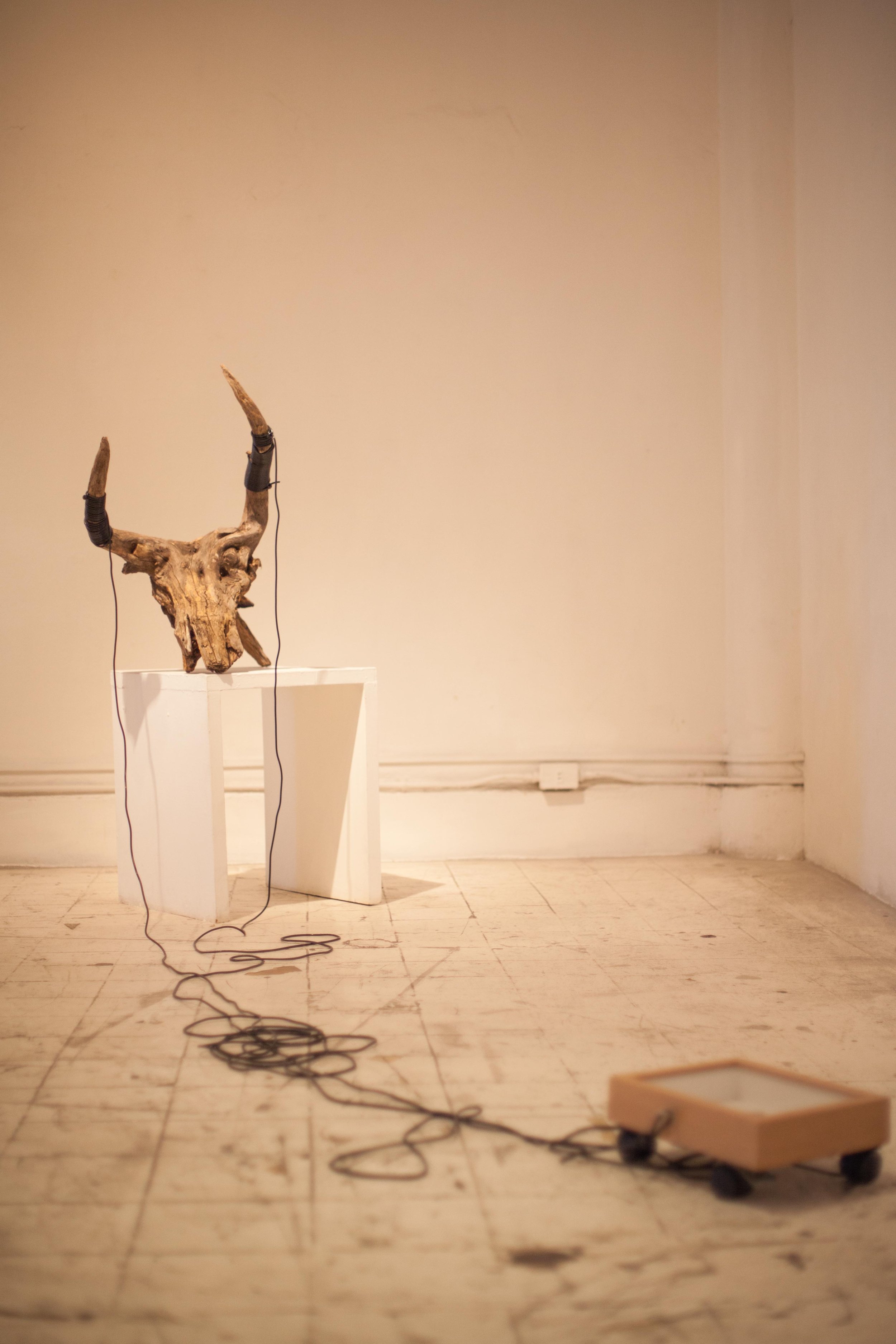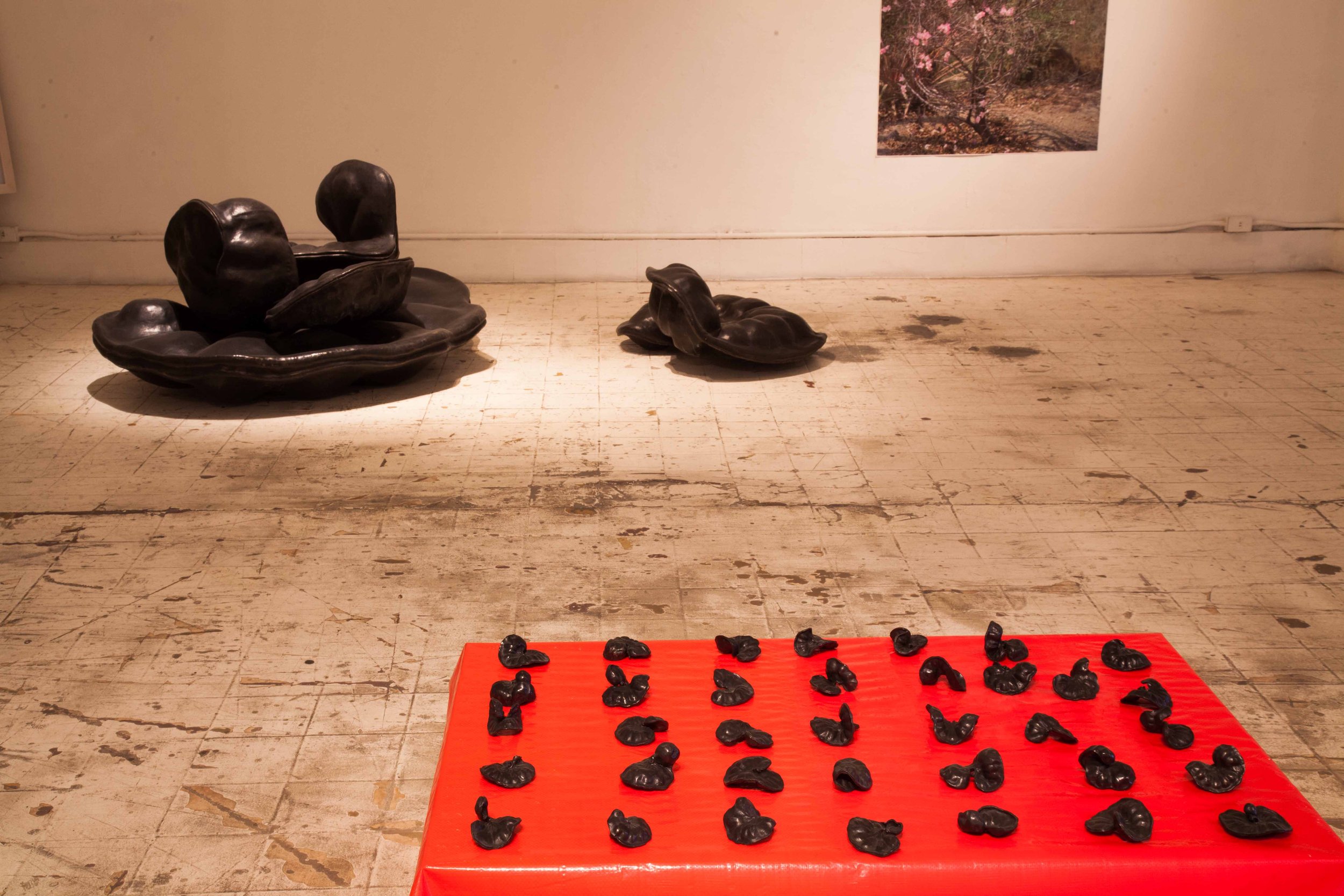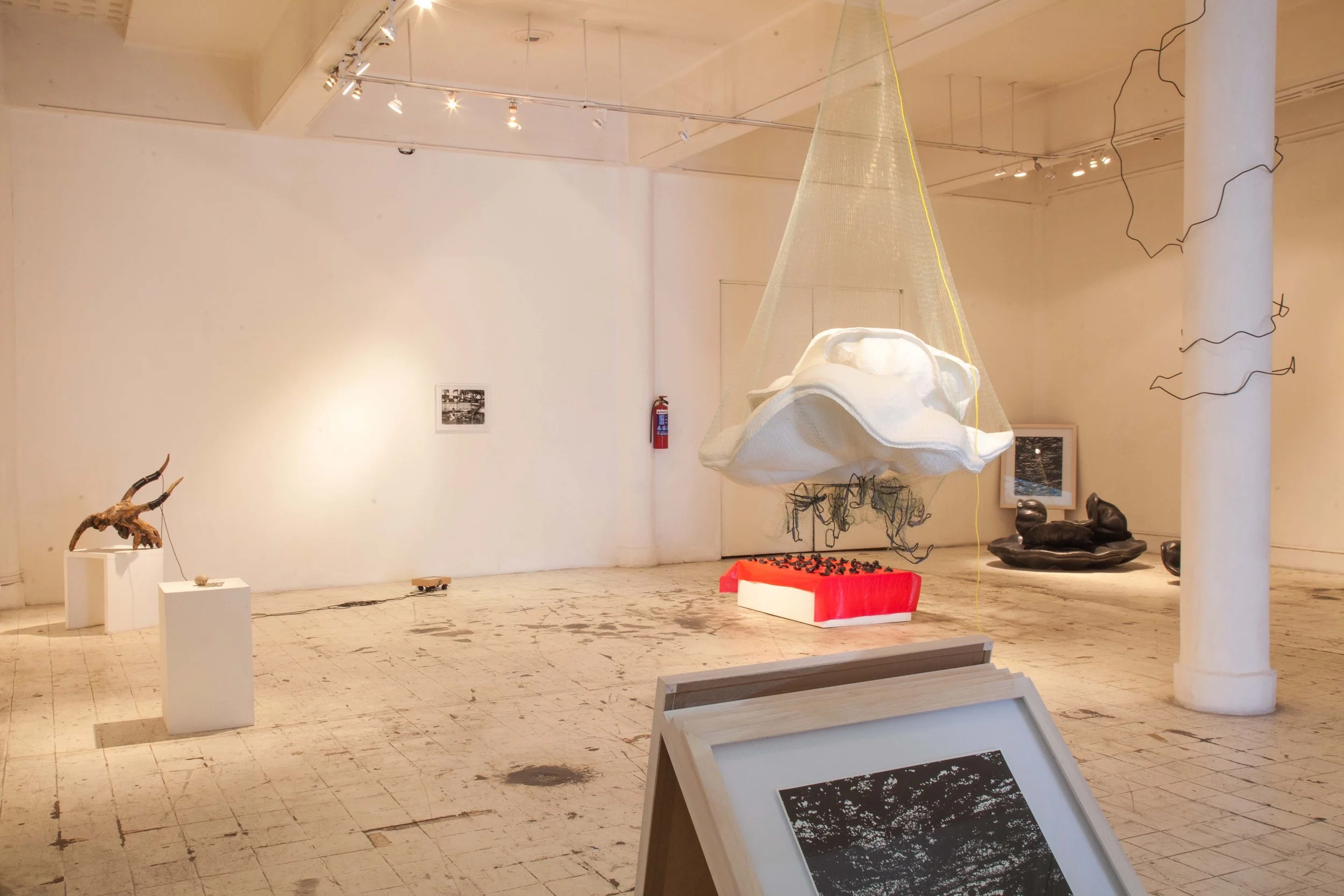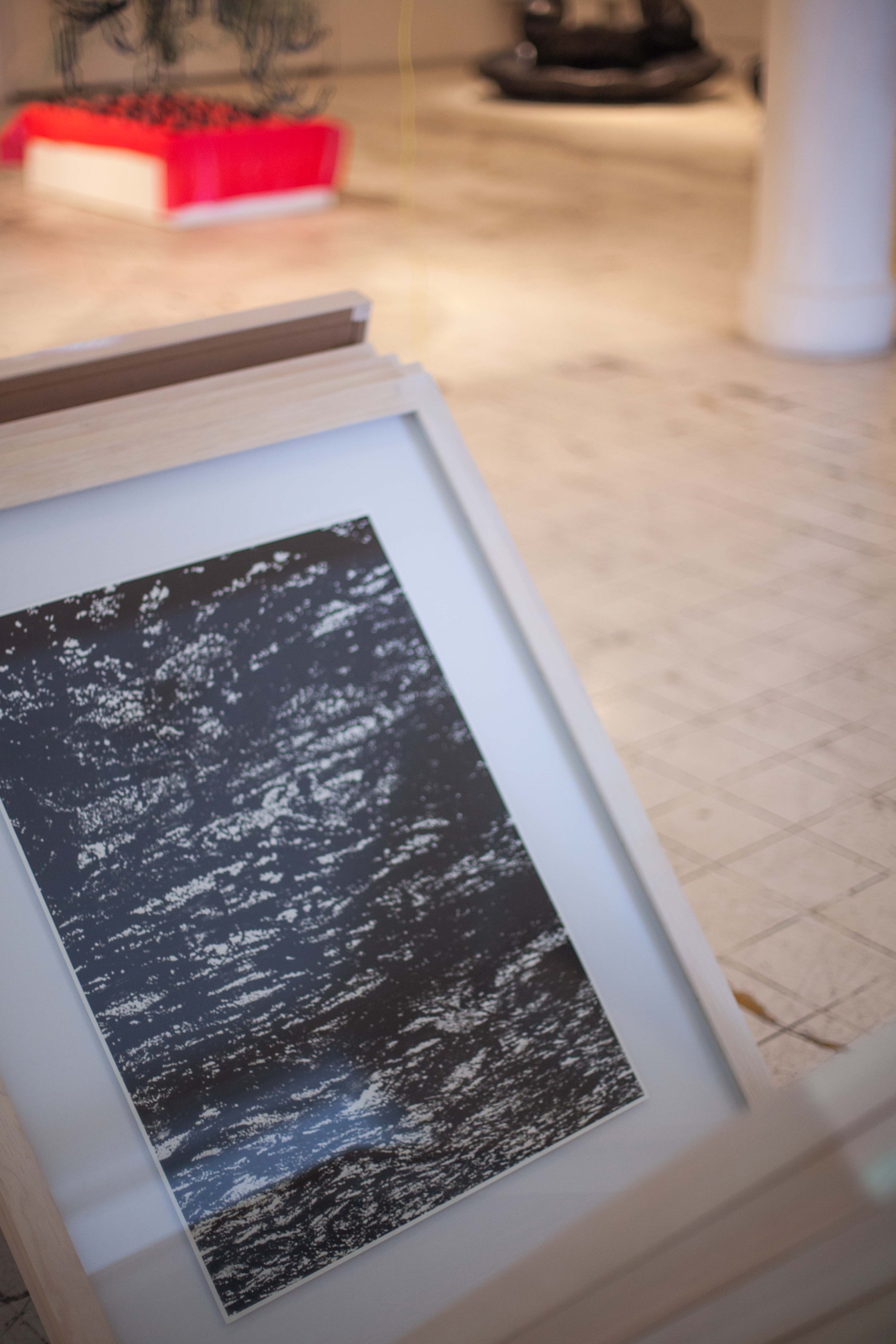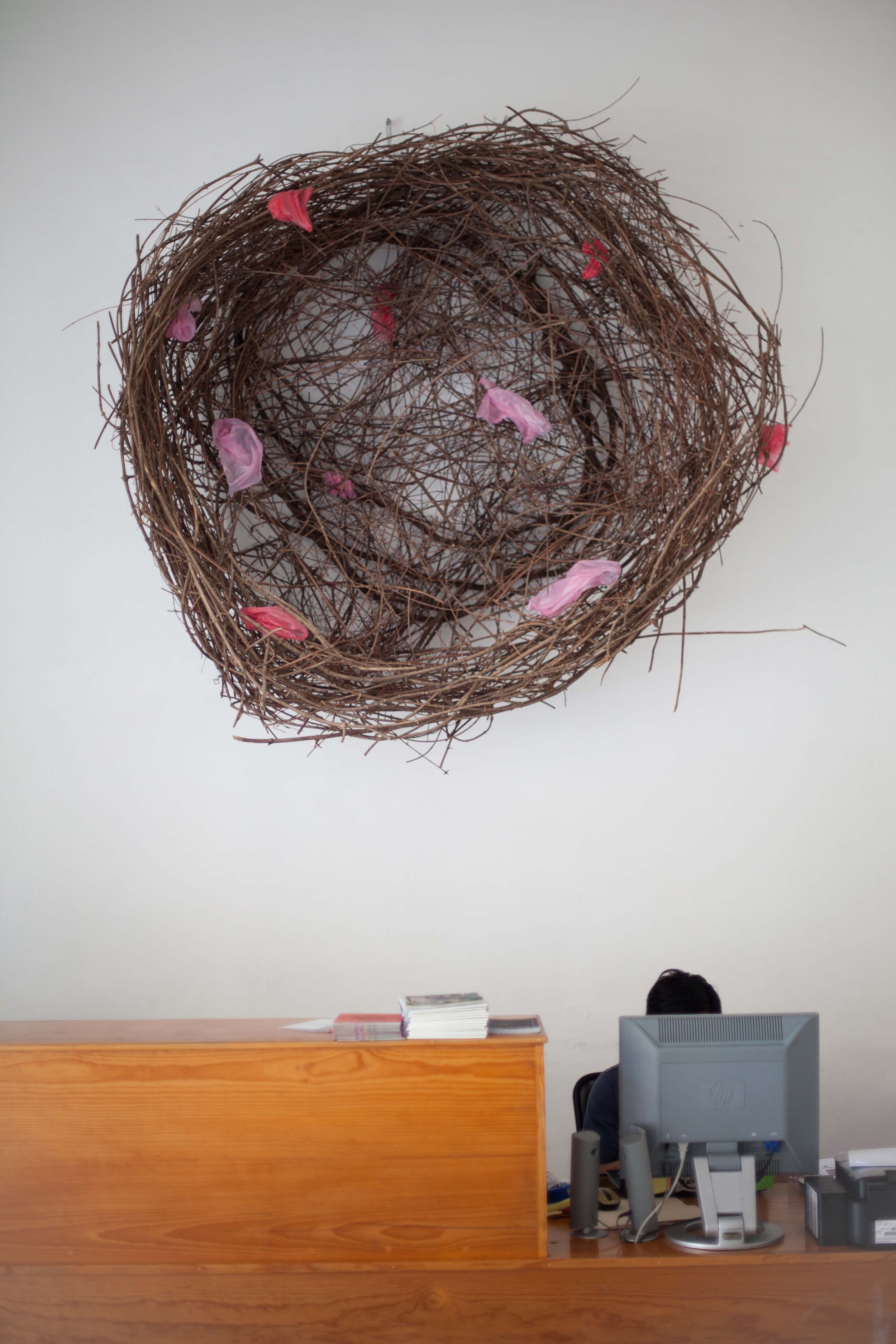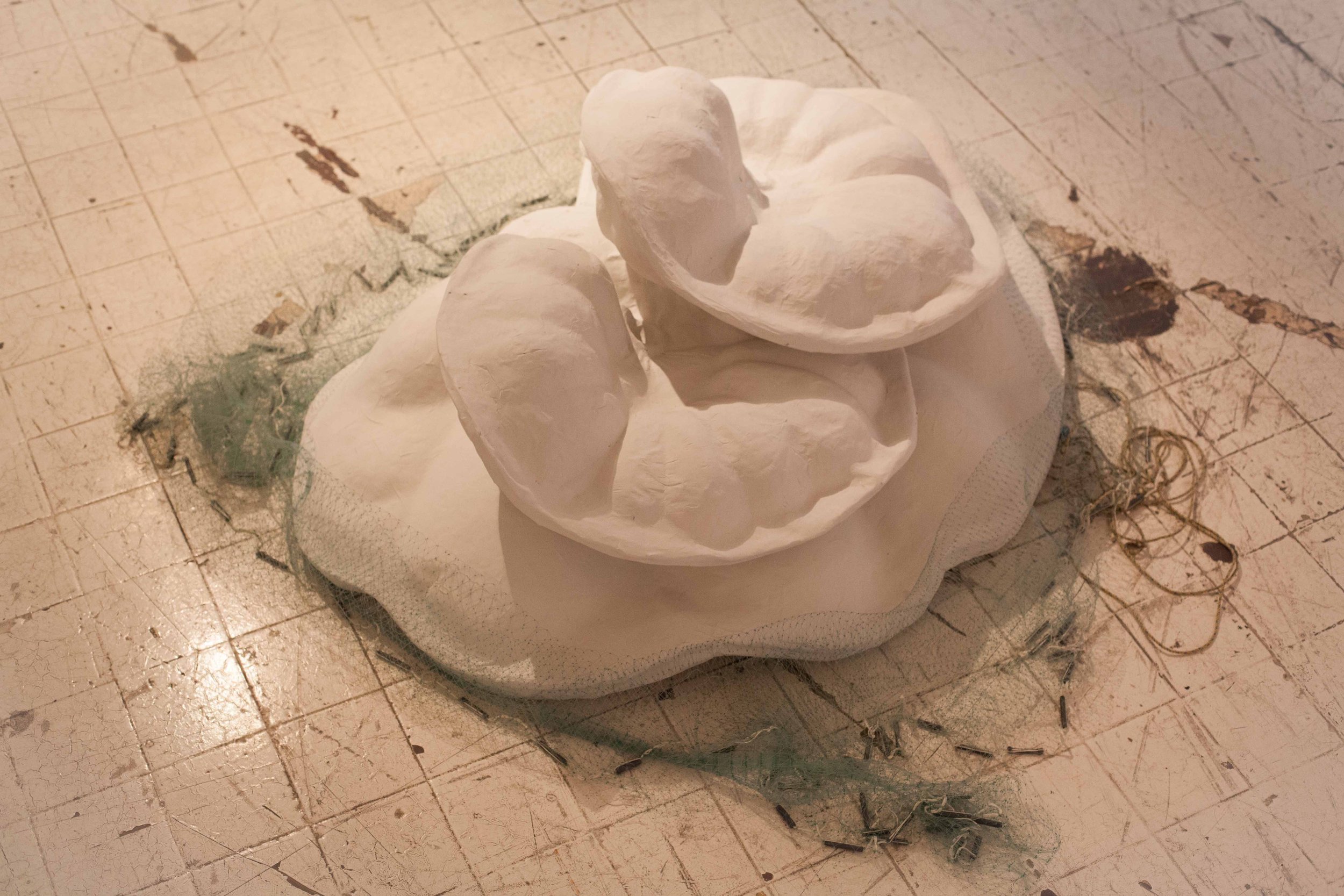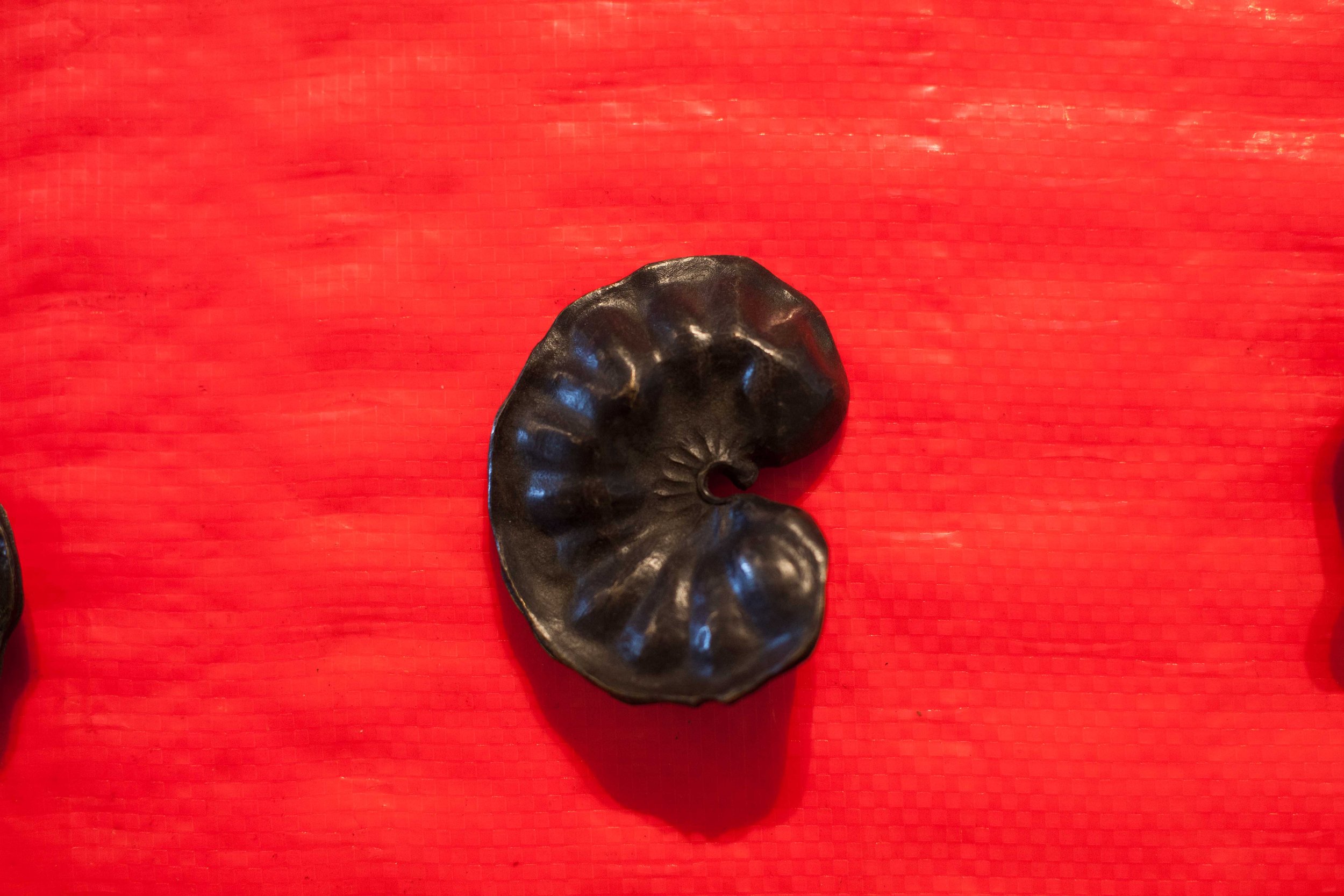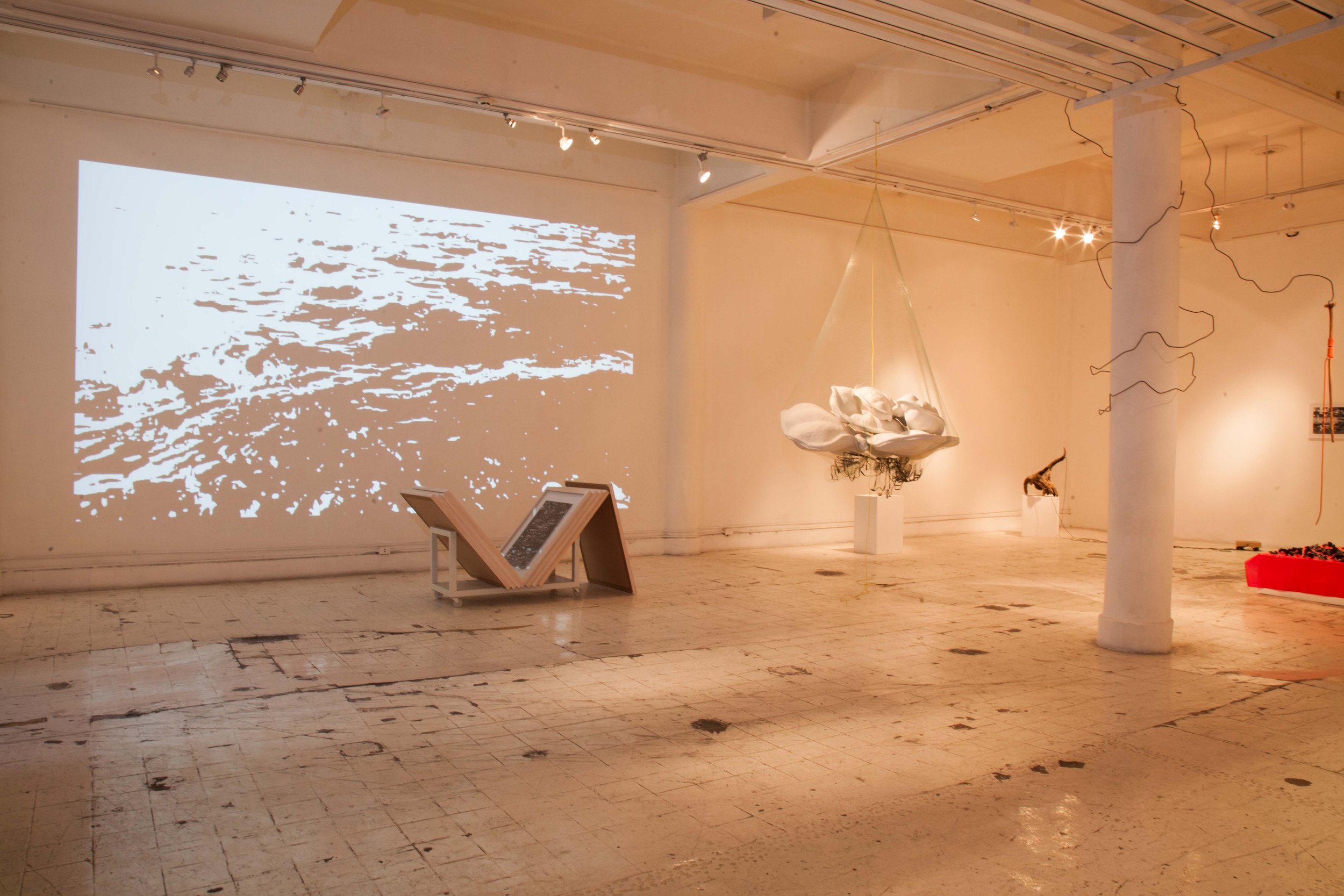BODEGA QUETZALLI
Ramon Jimenez-Cuen’s exhibition Nativo represents a bold departure from documentary photography into new forms and materials: video and sculpture, using bronze casts, found driftwood, cables and plastic, and a rolling cart to display and distribute framed photographs around the exhibition space.
Much of documentary photography deals with the depiction of strangers, or communities outside the experience of the photographer who is attempting to understand and represent their “otherness.”
In Nativo, Jimenez-Cuen reverses the direction that he has formerly pursued in photography in order to create a meditation on his own personal history and sense of place- not otherness now, but self and lineage. Part of this meditation is a testament to his father, who was killed a few years ago. The idea of roots and rootedness is physicalized in Nativo with cords and juxtapositions connecting disparate things to each other. In one loosely unfolding sculpture, a piece of driftwood resembling a bull’s head with horns, set on a pedestal, is connected by black cord to a little box on wheels that contains an old postcard portrait of the artist’s grandfather. The juxtaposition between the “bull’s head” and the photo-on-wheels is completed with a second photograph on the wall nearby-- of the artist and his son in a swimming pool. The conjunction of triangulated elements evokes a sense of continuity and mobility through time and space. Family history is situated in a reference to landscape; the driftwood reminds us of the arid Oaxacan countryside and represents the sometimes surreal detritus that can be found on the desert floor.
The exhibition of scattered pieces, on the floor and wall, and hanging from the ceiling, creates a sense of dry landscape, bordered by ocean. A wall-size projection of the sea, caught in bright sun with sparkling reflections, dominates a wall by the gallery entrance. Identical video stills in frames stacked on a rolling cart can be distributed by the viewer anywhere in the space, as if transporting image like a memory. Mirroring each other through the space, they suggest glimmers of a mirage-like oasis in the desert. (At the opening reception, this viewer took two images from the cart and leaned them against the wall in other areas, “irrigating” the landscape.) The multiplicity of the image is a nod to Walter Benjamin’s famous essay on the reproducibility of the photograph in the age of mechanical reproduction. Now the image has come off the page, or the cart, to animate a field of floor sculpture.











